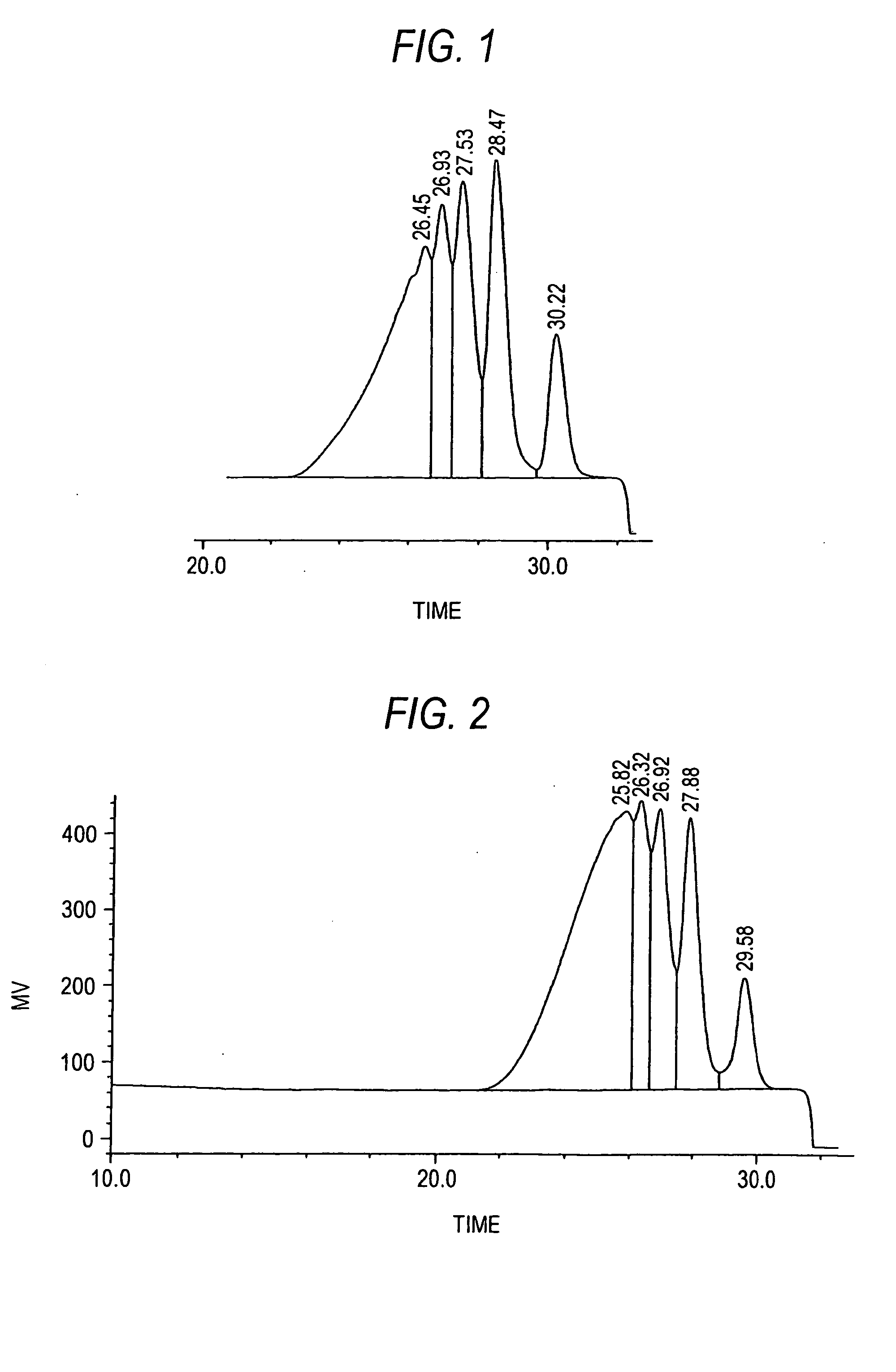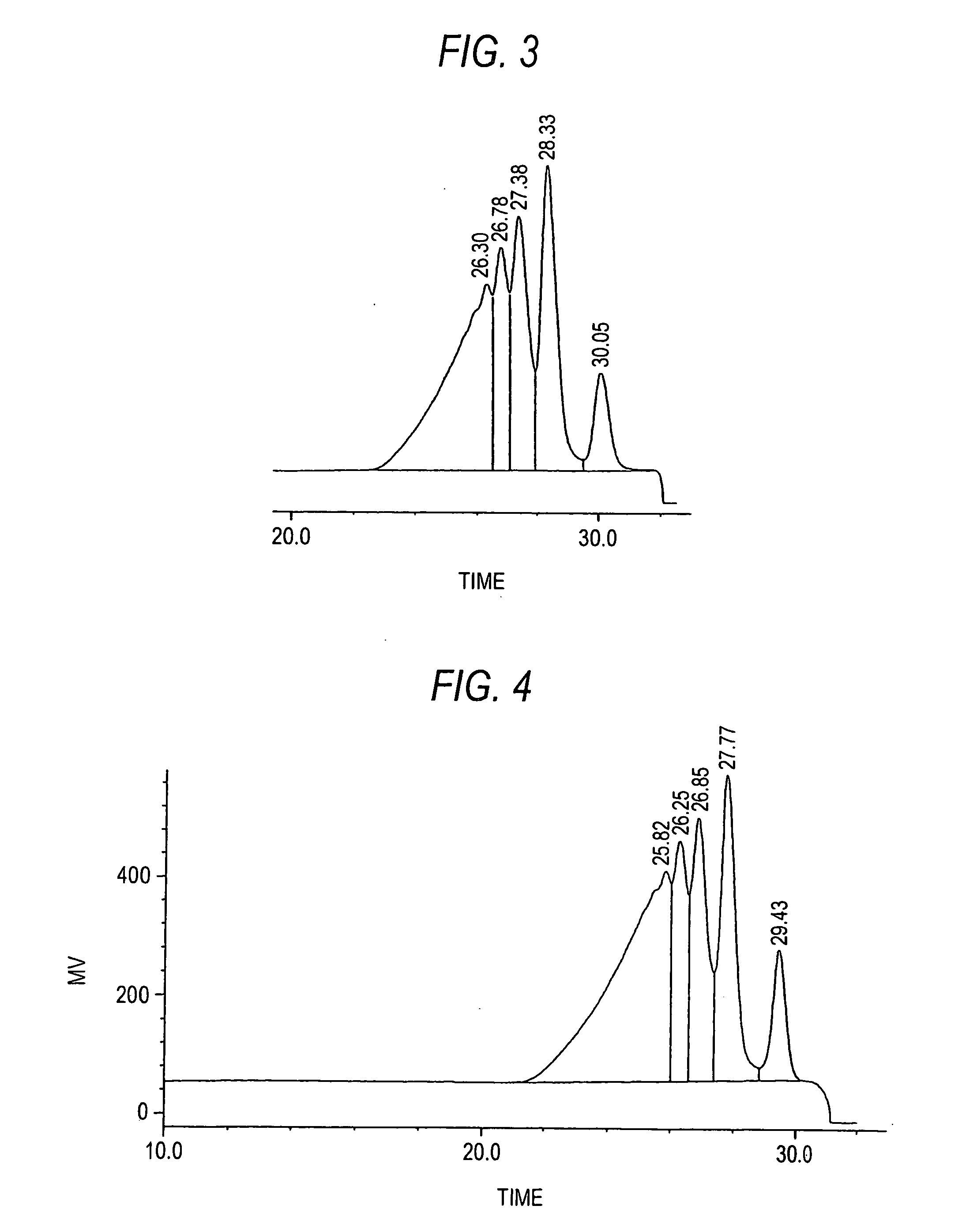Process for Producing Resorcinol-Formalin Resin
- Summary
- Abstract
- Description
- Claims
- Application Information
AI Technical Summary
Benefits of technology
Problems solved by technology
Method used
Image
Examples
example 1
[0081] After 133 kg of water, 85 kg of calcium chloride, and 111 kg of resorcinol were placed in a 500 L acid-resistant reaction vessel and dissolved at 50° C., 45 kg of methyl ethyl ketone and 0.45 kg of 35% hydrochloric acid were charged into the reaction vessel. While the reaction system was maintained at 50° C., 53 kg of 37% formalin was added dropwise over a period of 30 minutes and, after the completion of the dropwise addition, the mixture was further stirred for 30 minutes to cause a liquid-liquid heterogeneous reaction to proceed. While maintaining the temperature of the reaction system, it was allowed to stand and separate into two layers, and then an underlying aqueous phase was drawn off. The organic phase was diluted with 200 kg of methyl ethyl ketone and then 100 kg of water was added thereto. Furthermore, while maintaining the same temperature, the reaction system was stirred for 30 minutes and, after allowing to stand, separated into two layers and then the aqueous l...
example 2
[0090] After 1336 g of water, 850 g of calcium chloride, 1107.0 g of resorcinol, and 450 g of methyl ethyl ketone were placed in a 5 L flask made of glass and dissolved at 60° C., 4.5 g of 35% hydrochloric acid was charged into the reaction vessel. While the reaction system was cooled to 50° C. and maintained at 50° C., 490 g of 37% formalin was added dropwise over a period of 45 minutes and, after the completion of the dropwise addition, the mixture was further stirred at 50° C. for 1 hour to cause a liquid-liquid heterogeneous reaction to proceed. Thereafter, 40 g of 37% formalin was added dropwise over a period of 45 minutes and, after the completion of the dropwise addition, the mixture was further stirred at 50° C. for 1 hour to cause a liquid-liquid heterogeneous reaction to proceed. While the reaction system is maintained at the same temperature, it was allowed to stand and separate into two layers, and then an underlying aqueous phase was drawn off. The organic phase was dil...
example 3
[0094] After 2660 g of water, 1710 g of calcium chloride, 738 g of resorcinol, and 300 g of methyl ethyl ketone were placed in a 5 L flask made of glass and dissolved at 60° C., 9 g of 35% hydrochloric acid was charged into the reaction vessel. While the reaction system was cooled to 50° C. and maintained at 50° C., 326 g of 37% formalin was added dropwise over a period of 45 minutes and, after the completion of the dropwise addition, the mixture was further stirred at 50° C. for 1 hour to cause a liquid-liquid heterogeneous reaction to proceed. Thereafter, 27 g of 37% formalin was added dropwise over a period of 45 minutes and, after the completion of the dropwise addition, the mixture was further stirred at 50° C. for 1 hour to cause a liquid-liquid heterogeneous reaction to proceed. While the reaction system is maintained at the same temperature, it was allowed to stand and separate into two layers, and then an underlying aqueous phase was drawn off. The organic phase was diluted...
PUM
| Property | Measurement | Unit |
|---|---|---|
| Temperature | aaaaa | aaaaa |
| Fraction | aaaaa | aaaaa |
| Fraction | aaaaa | aaaaa |
Abstract
Description
Claims
Application Information
 Login to View More
Login to View More - R&D
- Intellectual Property
- Life Sciences
- Materials
- Tech Scout
- Unparalleled Data Quality
- Higher Quality Content
- 60% Fewer Hallucinations
Browse by: Latest US Patents, China's latest patents, Technical Efficacy Thesaurus, Application Domain, Technology Topic, Popular Technical Reports.
© 2025 PatSnap. All rights reserved.Legal|Privacy policy|Modern Slavery Act Transparency Statement|Sitemap|About US| Contact US: help@patsnap.com



